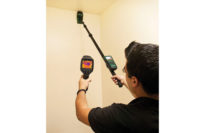Innovation in Restoration: Emerging Trends for 2012 and Beyond






The disaster restoration industry is implementing new technology every day and it’s important to understand why technology is changing so as not to be lulled into doing things the same way they have always been done. Innovation is important when you consider that, adjusted for inflation, flood damage estimates alone have averaged roughly $7.82 billion over the last 30 years in the United States (per NOAA). In fact, NOAA estimated flood damages increased to $8.41 billion dollars in 2011. If you add in fires, ruptured pipes, failed water tanks, etc., the numbers are staggering. It is easy to understand why improvements in technology are necessary. Today, materials can be protected with innovative products that make it easier to clean, disinfect, and even dry better and faster using new tools and techniques. Major restoration contractors recognize this as an opportunity and have launched a variety of new services to help their customers get back in their homes and get back to business in less time.
Indeed, advances in technology began when the disaster restoration industry was formed and was led by innovators. Many new ideas will emerge and mature in 2012, which could become a defining year for the disaster industry. For example, directed heat drying, better lower grain refrigerant dehumidifiers, remote management of drying systems, numerous applications to document the progress of drying equipment and new testing methods that assist us to define the level of contamination are finding their way into our industry.
In the testing arena for contamination, or levels of cleanliness, ATP meters are increasing in use the same way thermal imaging cameras became popular a few short years ago. I expect to see increased competition among leading restoration organizations that can prove to their clients that they have the knowledge and ability not only to get people back in their homes and businesses faster, but prove their dwelling has been returned to clean and sanitary living conditions. At the same time, improvements in disinfecting technology (bonded antimicrobials and new application technology) will reduce potential damage from contaminated flood-waters. These preventive measures help ensure that buildings affected by water can get wet without sustaining microbial contamination. The environmental cost savings (health and structure) alone are making this type of innovation an attractive choice despite a down economy. In many cases, a small investment in preventing microbial growth in a structure reduces significant risk from infectious disease.
Substantial improvements will continue to be made in the environmental sustainability of structural building products as FEMA and the insurance industry demand that buildings can withstand elevated moisture in an environmentally conscious manner. Innovative technology is clearly thriving as it becomes a standard part of our industry, not just in mold remediation, but also in cleaning, disinfecting, drying and testing. One area to watch closely this year is increasing preventative application of bonded antimicrobials. As trends of protecting the environment continue, the old way of cleaning and drying buildings could fall to extinction.
Businesses that survive these innovative changes will look quite different than they look today and firms that do not embrace change in the next year may risk loss of revenue. This applies to remediation contractors, as well as equipment and chemical manufacturers. In any event, the world of cleaning and restoration will look totally different by the end of 2012 than it did 20 years ago. Today’s changes in technology are profound - impacting remediators more than technology did many years ago.
Looking for a reprint of this article?
From high-res PDFs to custom plaques, order your copy today!






